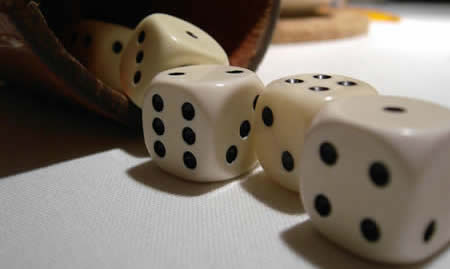Pepys’ Problem Solved
A CHANGE OF WEIGHT REVEALS NEWTON’S FLAW

Interestingly, Newton’s enumerated solution to Pepys’ problem is correct (see previous DSN entry), but the logic is wrong, as Statistician Stephen Stigler points out.
The problem is now solved by with bionomial distribution: the probability of A is the greatest. For those who speak R, the probabilities are
Probability of Event A = sum(dbinom(1:6,6,1/6)) = 0.67
Probability of Event B = sum(dbinom(2:12,12,1/6)) = 0.62
Probability of Event C = sum(dbinom(3:18,18,1/6)) = 0.60
This was Newton’s logic:
“If the question be thus stated, it appears by an easy computation that the expectation of A is greater than that of B or C; that is, the task of A is the easiest. And the reason is because A has all the chances of sixes on his dyes for his expectation, but B and C have not all the chances on theirs. For when B throws a single six or C but one or two sixes, they miss of their expectations.”
But Stigler points out Newton’s logic doesn’t hold if we use loaded dice, in which the probability of a six is not 1/6 but 1/4.
Probability of Event A’ = sum(dbinom(1:6,6,1/4)) = 0.82
Probability of Event B’ = sum(dbinom(2:12,12,1/4)) = 0.84
Probability of Event C’ = sum(dbinom(3:18,18,1/4))= 0.86
Mathemagically, the probabilities grow from A to C in this case.
For a fun and short read, check out:
Stigler, Stephen M. (2006). Isaac Newton as a Probabilist. Statistical Science, 21(3), 400-403. [Download]
Photo credit: http://www.flickr.com/photos/awshots/352212946/

